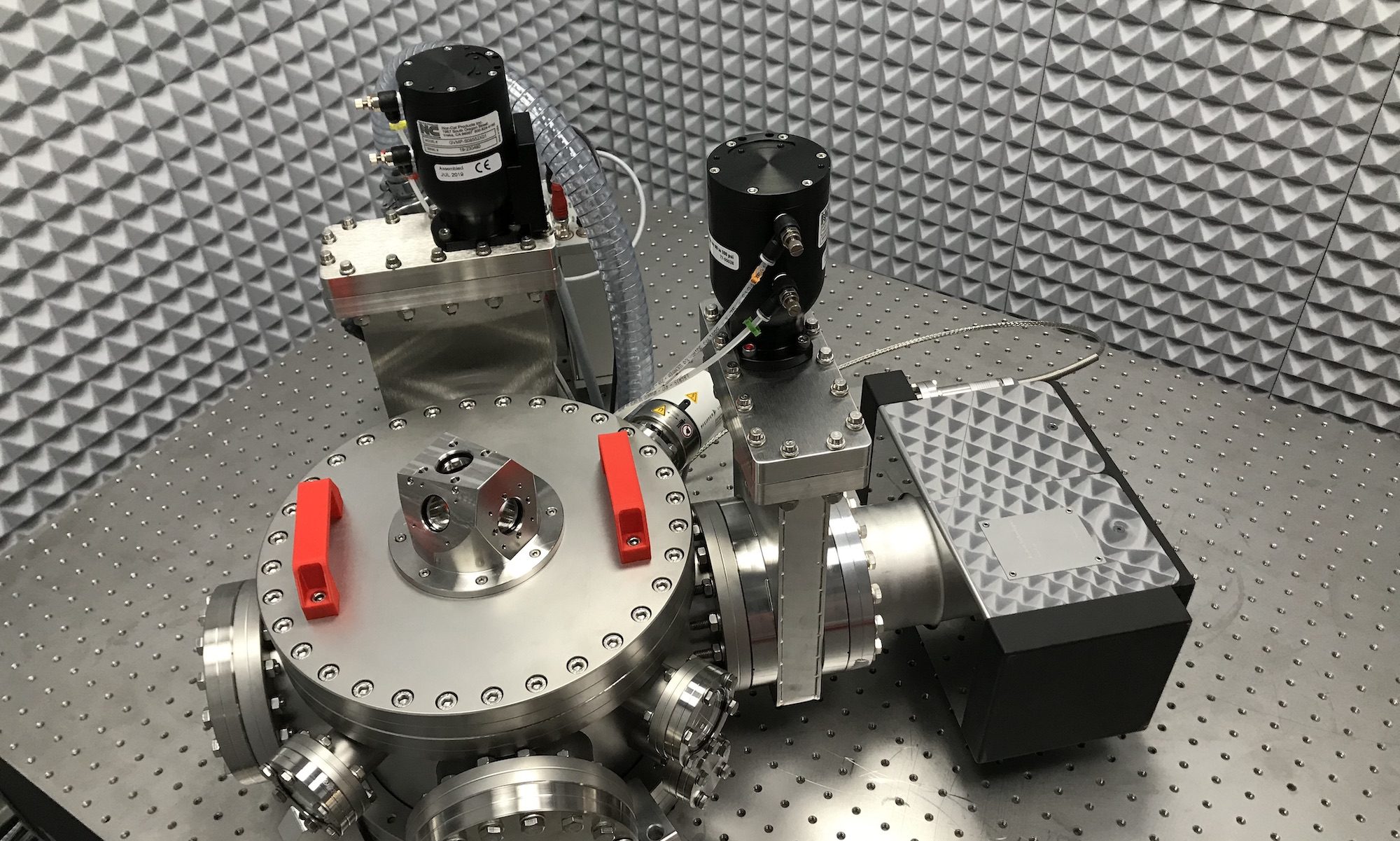This online tool computes the dynamic mode shape of an atomic force microscope (AFM) cantilever with clamped-free boundary conditions and an additional mass m at its free end, at a distance r from the neutral axis of the beam. From this various coefficients are deduced and can be applied to the calibration of the AFM sensitivity and probe stiffness through thermal noise measurement.
Update the input parameters to your values of interest, the figure on top of this page with the mode shape and the coefficients in the red frames below will be updated.
Input parameters
Computed mode shape
Defining x as the position along the cantilever normalised to its length, the static deflection is described by: z(x) = ½(3-x)x², while the dynamic deflection is z(x) = A (cos(ax)-cosh(ax) + R[sin(ax)-sinh(ax)]). R and a are set by the boundary conditions in x=1, and A by the normalisation of the mode [J. Laurent, S. Steinberger, L. Bellon, Nanotechnology 24 225504 (2013)]. For n = 1, m̃ = 0, r̃ = 0, we compute:
Calibration coefficients
The measurement of the deflection is usually performed using an optical beam deflection technique, which is sensitive to the slope of the cantilever at the laser spot position. The photodiode sensitivity (in nm/V) is calibrated using a force curve on a rigid substrate, and thus corresponds to the static deflection. The thermal noise calibration of the cantilever stiffness relies on the resonant modes (usually mode n=1), thus on the dynamic deflection. In [M. Chighizola, L. Puricelli, L. Bellon, A. Podestà, J. Mol. Recognit. e2849 (2020)], we define a deflection correction coefficient χ and a stiffness correction coefficient β. (eq. (7) page 4). A factor α̂ = β χ² can also be defined, it takes into account the fraction of the total oscillation amplitude stored in the considered normal mode. From the mode shape above, for n = 1, x0 = 1, m̃ = 0, r̃ = 0 we compute:
